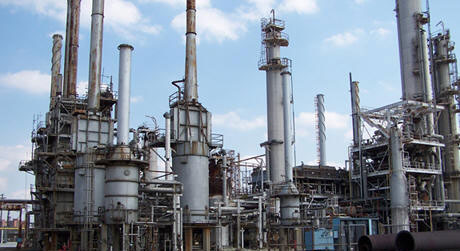Cooling towers are a vital component of many industrial operations, helping to dissipate heat from air conditioning and refrigeration systems, among other things. However, these systems can be energy-intensive and costly to operate without running at peak efficiency.
From regular cleaning and maintenance to advanced control systems, there are plenty of options for optimizing the performance of these critical systems. To help improve the efficiency of your industrial cooling tower and reduce energy consumption and costs, here are five tips to consider:
1. Know the materials your unit is made from
Is it made of stainless steel or galvanised steel? Is plastic pipe used in it? Fibreglass? Is a coating used as protection to lessen corrosion? Each of these materials responds differently to degradation and environmental variables.
Fibre-reinforced polyester (commonly known as FRP), which may be lightweight and withstand higher chemical usage and pH ranges, is used to build some of the most recent cooling towers. Another typical design combines galvanised metal with a sump or basin made of stainless steel, which can offer longevity without the prohibitively expensive price tag of a cooling tower made completely of stainless steel.
To lessen the likelihood and severity of corrosion and equipment breakdown over time, it’s crucial to understand the cooling tower’s construction, the materials used for its various components, and the water quality recommendations made by industrial cooling tower manufacturers.
2. Improve the efficiency of your chemical usage
Investigate possibilities with your water treatment specialist for regulating and reducing the usage of chemicals, which can be expensive. Monitoring the chemistry of cooling tower water carefully can also aid in lowering corrosion and deposition, enhancing system performance, and increasing the useful life of your equipment.
This can also be helped by properly pretreating the makeup water for cooling towers. Fewer chemicals are needed to prevent scaling and fouling on heat exchangers and pipework when using water treatment systems like reverse osmosis or ion exchange for softening. However, like with other water treatment methods, it’s crucial to speak with an expert who can offer advice based on the particular requirements of your business.

3. Monitoring and control systems
By tracking the performance of your cooling tower, you can identify opportunities for optimization and take steps to improve efficiency. Consider implementing a monitoring and control system to monitor your system’s performance and make adjustments as needed. Monitoring and control systems can make cooling towers more efficient by providing real-time data on the performance of the system and allowing for the implementation of optimization strategies.
By continuously monitoring the performance of the cooling tower, a control system can detect and alert operators to potential issues, such as a malfunctioning fan or pump. This allows for timely repairs, preventing larger issues from developing and disrupting the operation of the cooling tower. Monitoring and control systems can also provide data on energy usage and allow operators to identify opportunities for energy conservation.
4. Proper Sizing
Proper sizing of a cooling tower is essential for ensuring efficient operation. A cooling tower that is too small for the facility’s needs will be unable to adequately cool the water, leading to reduced efficiency and potentially causing the system to overheat. On the other hand, a cooling tower that is too large will use more energy than necessary to cool the water, leading to increased energy costs and reduced efficiency.
To determine the proper size for a cooling tower, several factors must be considered, including the heat load of the facility, the type of cooling tower, and the local climate. It is recommended to work with a professional engineering firm or consult with industrial cooling tower manufacturers to ensure that the cooling tower is properly sized.
5. Regular Cleaning and Maintenance
A cooling tower’s fill, fans, and circulating water system can become clogged with dust, dirt, and other impurities, decreasing performance and possibly resulting in damage. These chemicals can be removed and kept out of your cooling tower with routine cleanings. Follow a thorough maintenance plan and schedule cleanings at the proper intervals.
Conclusion
Overall, there are many steps you can take to boost the efficiency of your industrial cooling tower. From regular cleaning and maintenance to implementing advanced control systems, there are plenty of options for improving the performance of these critical systems. Doing so can reduce your energy consumption and costs while also helping protect the environment.
Keep reputable industrial cooling tower manufacturers on standby in case you require assistance or are confused about where to begin when it comes to increasing the effectiveness of your cooling tower.
Towertech India’s experts are the industry leaders in water treatment. They are delighted to explain how a personalized strategy for your cooling tower can lead to cheaper long-term costs and improved safety. Make contact to arrange a meeting to talk over your alternatives and objectives.


